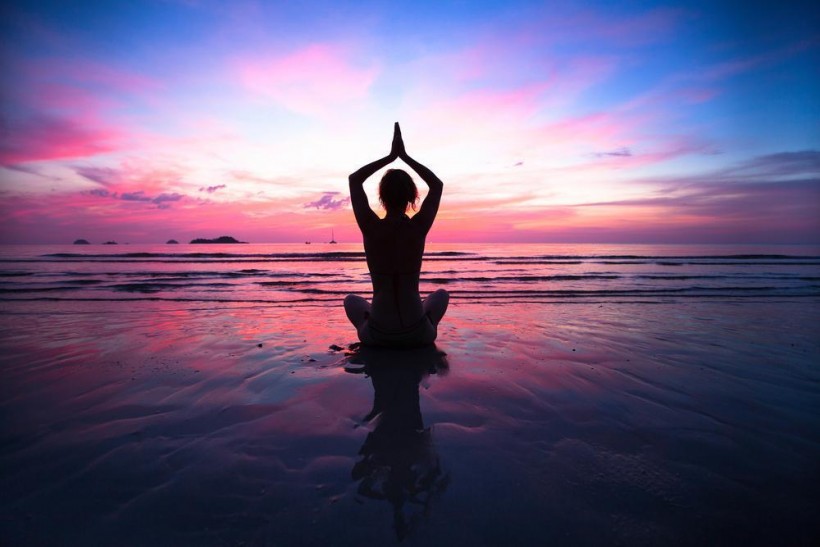Yoga, an ancient practice rooted in India, has become increasingly popular worldwide for its numerous physical, mental, and spiritual benefits. By combining physical postures, breath control, and meditation, individuals practicing yoga aim to balance their body, mind, and spirit.
There are various styles of yoga, each with its distinct approach to the practice. Some emphasize physical exertion and alignment, while others focus on relaxation and mindfulness. Regardless of the style, yoga is accessible to people of all ages and fitness levels, making it an inclusive practice with diverse applications.
Research studies have supported the positive impact of yoga on physical health, including improvements in strength, flexibility, and aerobic capacity. Furthermore, mental health benefits include reduced stress, improved emotional resilience, and increased focus. These wide-ranging benefits make yoga more than just a fitness practice; it is a holistic approach to optimal well-being.
History of Yoga
The origins of yoga can be traced back to ancient India, around 5,000 years ago. Although the exact details of its early history are somewhat unclear,
it is generally accepted that yoga was first mentioned in the Rig Veda, one of the oldest Hindu scriptures. The text contains a collection of hymns, mantras, and guidelines for rituals and ceremonies.
Over time, yoga has evolved into many forms and has been influenced by various ancient Indian philosophies, such as Jainism and Buddhism.
During the Upanishadic period, around 500-200 BCE, the practices associated with yoga began to be codified. During this time, meditation and ethical principles became key elements of yoga, and texts such as the Bhagavad Gita emphasized the importance of mental and physical discipline.
In the following centuries, different forms and styles of yoga emerged, including Hatha Yoga in the 11th century CE. Hatha Yoga focuses on practicing asanas (postures), pranayama (breath control), and meditation to achieve spiritual enlightenment and balance the body and the mind.
Yoga continued to develop and spread to different parts of the world throughout its history. In the late 19th and early 20th centuries, Indian yogis introduced the practice to Western audiences, who quickly embraced its physical benefits and emphasis on spiritual well-being.
Over the past century, yoga has become increasingly popular in Western countries, and numerous styles and schools have emerged. Despite varying approaches and techniques, the fundamental principles of yoga remain rooted in its ancient history, emphasizing the union of the mind, body, and spirit.
Types of Yoga
There are various types of yoga, each with unique characteristics and benefits. This section will briefly discuss Hatha, Vinyasa, Ashtanga, Kundalini, Bikram, Yin, Iyengar, and Restorative Yoga.
Hatha Yoga
Hatha Yoga is a traditional style of yoga that combines physical postures, breathing exercises, and meditation to promote mental and physical well-being. It is suitable for beginners as it emphasizes slow, controlled movements and focuses on mastering basic postures.
Vinyasa Yoga
Vinyasa Yoga, or flow yoga, creates a continuous, fluid movement by connecting various postures through synchronized breathing. It offers a more dynamic experience, with classes often involving different sequences and intensity levels to challenge students as they progress.
Ashtanga Yoga
Ashtanga Yoga is a more demanding and structured style involving a specific sequence of postures performed in a set order. It focuses on building strength, flexibility, and stamina through a combination of breath, movement, and concentration. Ashtanga requires discipline and consistent practice, making it less suitable for beginners.
Kundalini Yoga
Kundalini Yoga incorporates physical postures, breathwork, mantra chanting, and meditation to awaken dormant energy at the base of the spine. This practice aims to cultivate spiritual growth and self-awareness while providing physical benefits like increased flexibility and stress relief.
Bikram Yoga
Bikram Yoga is unique in a heated room of 105°F with 40% humidity. The practice consists of 26 postures and two breathing exercises, helping to increase flexibility, strength, and endurance. However, caution must be exercised when practicing Bikram Yoga due to the intense heat and risk of dehydration.
Yin Yoga
Yin Yoga is a slow-paced practice that involves holding postures for longer, typically 3-5 minutes. The extended hold target deep connective tissues, increasing flexibility and promoting relaxation. Yin Yoga is suitable for all levels and can counterbalance to more vigorous forms of yoga.
Iyengar Yoga
Iyengar Yoga is characterized by its attention to detail and alignment. The method uses props like blocks, belts, and blankets to help students achieve correct posture and minimize the risk of injury. Iyengar Yoga is suitable for all ages and abilities, making it an excellent choice for both beginners and experienced practitioners.
Restorative Yoga
Restorative Yoga primarily focuses on relaxation and stress relief, using props to support the body in various poses. The aim is to promote deep relaxation, allowing the body to heal and restore its natural balance. This gentle practice suits all levels and complements more rigorous yoga styles.
Components of a Yoga Practice
A complete yoga practice incorporates several components to create a balanced, holistic experience. These components enhance the practitioner's physical, mental, and spiritual well-being. This section will discuss four key elements: Asanas, Pranayama, Meditation, and Intention Setting.
Asanas
Asanas are the physical postures practiced in yoga. These postures help to build strength, flexibility, and balance within the body. They also help to improve both mental focus and overall body awareness. Some popular asanas for beginners include:
-
Child's Pose (Balasana)
-
Mountain Pose (Tadasana)
-
Downward-Facing Dog (Adho Mukha Svanasana)
-
Tree Pose (Vrksasana)
Pranayama
Pranayama is the practice of breath control in yoga. It is an essential component to deepen the connection between the body and the mind. There are several Pranayama techniques, each with specific benefits. Some common methods include:
-
Equal Breathing (Sama Vritti)
-
Alternate Nostril Breathing (Nadi Shodhana)
-
Breath of Fire (Kapalabhati)
-
Three-Part Breath (Dirga Pranayama)
Meditation
Meditation is vital to a yoga practice as it encourages mindfulness and self-awareness. It is often integrated into the practice to provide a sense of inner calm and focus. Meditation can take on many forms but typically involves sitting quietly and focusing on the breath or a specific point of concentration.
Intention Setting
Setting an intention in yoga helps encourage a purposeful and mindful experience. Practitioners are encouraged to set an intention or Sankalpa at the beginning of their practice, which serves as a reminder of their personal goals, values, or desires. This intention can be revisited and nurtured throughout the practice to maintain focus and presence.
Benefits of Yoga
Physical Benefits
Yoga is widely known for its physical benefits. Regular practice can help improve flexibility, strength, and balance. Some of the key physical advantages include:
-
Increased muscle strength and tone
-
Better posture and alignment
-
Enhanced flexibility
-
Improved cardiovascular health
Mental Benefits
One of yoga's most significant mental benefits is its ability to increase focus and concentration. Practitioners often find that they experience greater mental clarity and a heightened sense of awareness:
-
Reduced stress levels
-
Improved cognitive function
-
Greater ability to handle emotions
-
Enhanced self-awareness
Emotional Benefits
Yoga enables individuals to explore their emotions and develop healthier coping mechanisms. With its emphasis on mindfulness and deep breathing, yoga can have a positive impact on emotional well-being:
-
Improved emotional regulation
-
Increased self-compassion
-
Greater sense of inner peace
-
Reduced anxiety and depression symptoms
Spiritual Benefits
Finally, the spiritual benefits of yoga often inspire individuals to seek deeper connections with themselves and the world around them. While the spiritual aspects of yoga vary among practitioners, some common benefits include:
-
Increased sense of interconnectedness
-
Enhanced self-understanding
-
Greater awareness of one's values and beliefs
-
Development of a personal spiritual practice
Yoga Accessories and Props
Yoga accessories and props can significantly enhance one's practice by providing support, improving alignment, and increasing comfort during various poses. This section will discuss some of the most common and valuable yoga props.
Yoga mats are an essential accessory for any yoga practitioner. They provide cushioning for the body and grip to prevent slipping during poses. Some popular types of yoga mats include PVC, rubber, and TPE. Each has advantages and disadvantages, but all provide support and stability during practice.
-
Yoga Blocks: Yoga blocks are typically made of foam, cork, or wood, and are used to provide support during challenging poses, help with balance, and assist in proper alignment. They come in various sizes and shapes, allowing practitioners to choose a block that best suits their needs.
-
Yoga Straps: Straps are versatile props that can deepen stretches, facilitate proper alignment, and increase range of motion. They assist practitioners in reaching their limbs, helping to maintain proper form in various poses while building flexibility and strength.
-
Bolsters and Cushions: Bolsters and cushions are commonly used in restorative and Yin yoga practices. They provide support for deep relaxation and can also help with alignment in seated poses. Bolsters come in various sizes and shapes, while cushions are often round or square.
-
Yoga Blankets: Blankets serve multiple purposes in yoga practice. They can be used as padding for seated poses, warmth during relaxation, or extra support under the head, knees or hips in various asanas.
While not all yoga practitioners may utilize each of these props, their availability can significantly enhance one's practice. It is essential to understand the proper use of each prop and to integrate them mindfully into one's routine, as they can significantly contribute to a yoga session's overall experience, safety, and effectiveness.
How to Choose the Right Yoga Class
Choosing the right yoga class can be challenging for beginners and experienced practitioners. There are many factors to consider, and personal preferences and needs will play a significant role. Here are some tips that may help you find a class that's right for you.
First, research the types of yoga available in your area. There are many styles of yoga, such as Hatha, Vinyasa, Ashtanga, and Kundalini, each offering unique benefits and focusing on different aspects of the practice. Understand the differences between these styles and determine which one aligns with your personal goals and preferences.
Next, look into the class schedules and locations. It's important to find a yoga studio that is easily accessible and offers classes at times that work with your schedule. Convenience is key in ensuring you maintain a consistent yoga practice.
Another important aspect to consider is the instructor. A knowledgeable and experienced teacher can significantly impact your yoga experience. Look for certified instructors with a good reputation among their students. You might also consider attending a trial class to gauge the instructor's teaching style and the class atmosphere.
Lastly, consider the studio environment, atmosphere, and facilities. These factors can greatly impact your overall experience and enjoyment of the class. A clean, well-maintained studio with comfortable amenities and a sense of community can support your practice and make it more enjoyable.
In conclusion, take the time to explore your options, sample different classes and instructors, and consider your personal preferences and goals when choosing the right yoga class. Doing so will make you more likely to find a class that truly benefits your body, mind, and spirit.
Yoga Etiquette and Guidelines
Practicing yoga involves not only physical postures but also an understanding of the principles of respect and consideration for others. Adhering to some basic yoga etiquette and guidelines can make the experience more pleasant and rewarding for everyone involved.
Arriving on time for a yoga class demonstrates respect for the teacher and fellow students. It is best to arrive a few minutes early to settle in, set up your mat, and gather any props needed for the practice.
|
Etiquette |
Guideline |
|
Turn off electronic devices |
Before entering the studio, turn off or silence any devices to minimize disruptions during the class. |
|
Maintain personal hygiene |
Since yoga is practiced near others, it is essential to maintain good personal hygiene and wear clean, comfortable clothing. |
|
Respect personal space |
When placing your mat, allow ample space between you and other students to accommodate movement and maintain a sense of calm and ease. |
|
Refrain from wearing strong fragrances |
Avoid applying strong perfumes or scented lotions before class, as some participants may be sensitive or allergic to these fragrances. |
In addition to these etiquette guidelines, practitioners should be mindful of their bodies and limitations. Listen to and honor your body's signals, modifying as needed and refraining from pushing beyond your comfort zone. Yoga is a personal journey, and it is essential to focus on your progress while respecting the needs and abilities of others.
Finally, practicing gratitude and humility can enhance the overall yoga experience. Acknowledge and appreciate the efforts of your instructor and classmates, and recognize the importance of the mind-body connection facilitated through yoga.
© 2024 NatureWorldNews.com All rights reserved. Do not reproduce without permission.
* This is a contributed article and this content does not necessarily represent the views of natureworldnews.com

![Bison Herd Consisting of 170 Reintroduced Individuals in Romania Could Store Carbon Emissions Equivalent to 43,000 Cars [Study]](https://1471793142.rsc.cdn77.org/data/thumbs/full/70533/280/157/50/40/bison-herd-consisting-of-170-reintroduced-individuals-in-romania-could-store-carbon-emissions-equivalent-to-43-000-cars-study.jpg)




